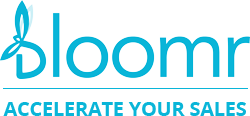Simple ways to gather consumer insights and upscale your business
Is your brand built around the needs of your existing or potential customers?
Do you have a robust process to spot their changing dynamics and suitably innovate and adapt your value proposition?

Rahul Kulkarni
In this age with free flow of information, your customers today are more sophisticated, spoilt for choices & lured by large number of options. It is more critical than before for you get to the root of the customer issues, build a sharp brand proposition and create communication that cuts the clutter. Investing in getting a clear insight into the mind of your customer can help you build a strong and resilient brand helping you to sustain and grow your business.
Do you need to invest into gathering customer insights at all?
If you reflect back to how you started off, I am more than sure that you will attribute your early success to that one singular insight which helped you get your first customer. However, you would have soon realized that business dynamics change, the customer is looking for more and the competition is getting intense. You have had to change and adapt to the new environment in order to survive and grow. Scaling up your business would mean adding new products or services, expanding boundaries, addressing new customer segments or even up trading existing ones. All of this would require you continue searching for newer insights and keep re building your brand story every time.
As a growing organization with limited resources at your disposal are there ways in which you can accumulate customer insights consistently and in a cost effective manner. Lets explore…
- Observe your customer with your ear to the ground
Observe your customers in their workplace. Put yourself in their shoes and try answering some simple yet powerful questions
- Who are they?
- What do they do?
- What are their pain points or challenges?
- How are they currently dealing with these?
- Can I address some of them & how?
- Converse with them constantly to seek inputs
Open and informal conversations help get a better understanding of your customers and help build a connection. Is there some change in their needs? How are their requirements and hence expectations from you changing? How do they perceive you currently?
This can also be a direct source of feedback for you to improve or add to your product or service offerings.
- Study them as they buy and consume your products
Interact with your customers at a crucial point when purchase decisions are made. Try and find out how the buying decision is made. Who are the people involved in the process? You can have a post purchase study of your customers. Are there any challenges in using the product? Are there any performance gains or gaps? Is the customer willing to sign up for repeat buying or long-term contract?
This will help gauge if your product or service is actually delivering the promised value.
- Meet your competitors customers
Interacting with only your own customers will not give you a complete picture. Business is never done in isolation and we have competition with their loyal customers. By ignoring them you might miss out on potential customers. Find out what is it that competitors promise and deliver that is preferred over your product.
Lets take a look at how do we go about doing all of this. Are there methods we can adopt and tools that can be leveraged?
There can be both formal and informal ways to go about gathering customer insights.
Form a task group from your team who can be involved in this process: This is a group of people in various roles who will work collaboratively to gather and convert customer insight to actions.
- What are you trying to get insights on – is it your product feature, pricing, post purchase satisfaction or availability of your product?
- Which customer segment would you like to focus on?
- What is the purpose – to a build a new feature, change your communication, revamp your channels, target a competition
- What outcomes do you expect or simply put where will you use the insight– A product launch plan, construct an offer or to train your sales team
Build a plan: Clearly define how much time, effort and money would you like to spend on the activity. You might not want to over invest but rather use the resources at hand smartly to achieve your objectives. As this is an additional task for people to do above the regular work it is important that you set the expectations upfront.
Not all activities will require you to invest large sums of money. Say observing a customer buy can be done by your own employees. In my early days working with Castrol, we had an annual event “Watch the customer day”. Everyone in the organization including people in functions such as finance or manufacturing would take a few hours out to go to a customer site or a factory shop floor to observe end users and share insights gathered.
Identify activities and tools you can use: This will depend on the customer segment to be addressed, purpose of the activity, what are the expected outcomes as well as the budgets that can be allocated. There can be many tools that can be deployed formally or informally. These can be primary study done by you or someone you have hired or through secondary sources. Some of them can be
Primary Sources
- In depth Interviews
- Survey forms for feedback
- Observations at shop floor or sites
- Discussing with competition channels or employees
- Participation in events and exhibitions
Secondary Sources
- Research published by experts in the field or by industry bodies e.g. CII, FICCI
- Journals or sectorial magazines. e.g Energetica India, Steel & Metallurgy
- Government data can provide insights e.g. demographics, industrial output, infrastructure projects
Use Technology to your advantage: With the explosion of social media and rapid adoption of technology there can be new ways to get customer insights
- Social media platforms such as Linkedin can be good sources of information. You can use it creatively by conducting polls, join relevant groups or participate in discussions
- One can use digital tools such as Survey monkey, Google forms to reach out to customers or prospects to gather feedback.
Not all information is insight
“Discovery consists of looking at the same thing as everyone else and thinking something different” – Albert Szent Gyorgi
Our objective is to gather insights in order to build a compelling brand story. The exercise should have a finite timeframe and execution plan. Over investing in gathering information might not lead to any incremental gain. In fact we should be careful to filter and use information, as all the information gathered is not insight and some of it might not even be true or relevant.
Great! So what do I do next?
As a business owner it is your responsibility to create a customer centric culture in your organization. You can start this journey by:
- Being clear in your mind that gathering insights is important for your business
- Commit to Invest time, effort & some bit of money for the activity
- Ensure that your team is aligned and properly trained for this activity
- Monitor the progress by doing monthly or quarterly meetings of the group
- Do an analysis of how this activity has helped you e.g new feature built or a large customer acquired

About Author
Rahul Kulkarni
Rahul has over 2 decades of experience as a corporate professional, business consultant and an entrepreneur. He consults corporates, SME’s & startups to help sustain and scale up their businesses.
Business strategy, sales & distribution, key account management, B2B marketing, product management, communication models, rural marketing, leadership development & sales competency programs are his areas of expertise.
He is a passionate triathlete & ironman having participated in races across the globe. He is an avid trekker frequenting the high altitude Himalayan region.




